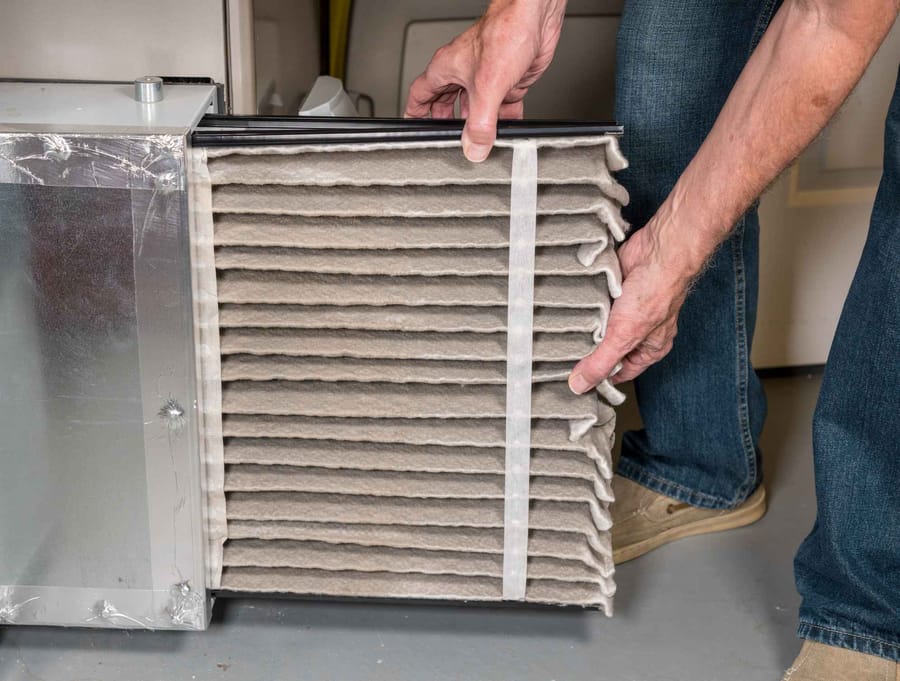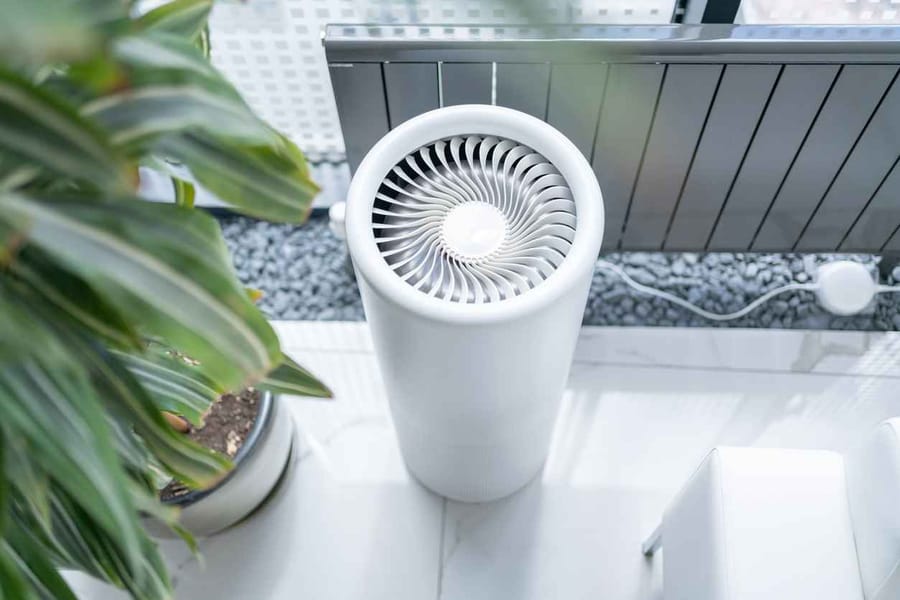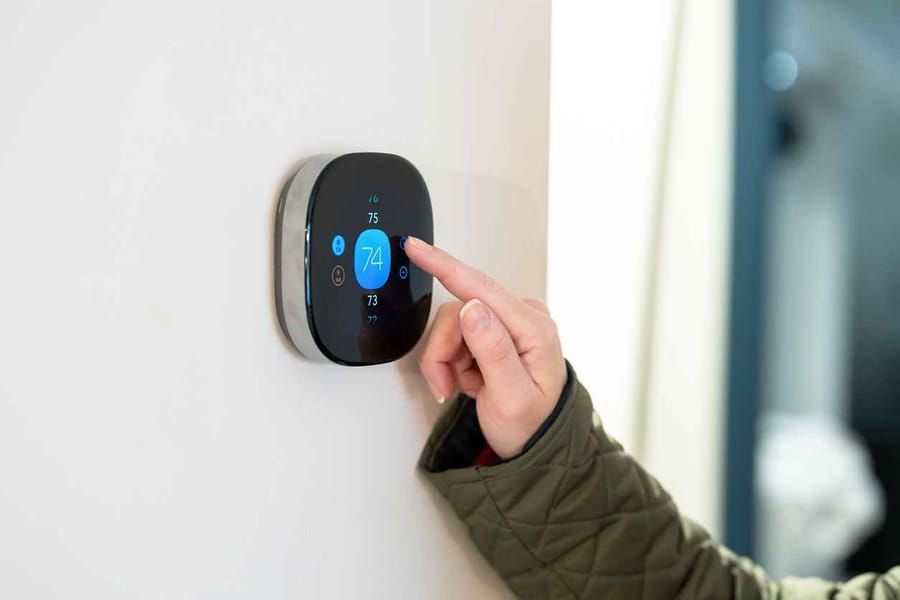4.9 Google Rating
Why Is My Heater Blowing Cold Air? Dallas Homeowner Troubleshooting Guide

When cold fronts sweep through North Texas, homeowners depend on their heating systems to keep indoor spaces warm and comfortable. So when a heater suddenly starts blowing cold air, it can be both frustrating and concerning. This is a common issue in Dallas, especially during the winter months when heating systems are pushed into full operation after long periods of light use.
In many cases, the cause of cold air is something simple that homeowners can check on their own. Other times, the problem points to a deeper mechanical or electrical issue that needs professional attention. Understanding why heaters blow cold air can help you diagnose the problem quickly and decide on the right next step.
This troubleshooting guide walks you through the most common reasons your heater may be blowing cold air, from thermostat issues to ductwork leaks, blocked filters, and heat pump defrost cycles. You will also learn when it is time to call a professional technician to avoid further damage and restore reliable heating in your Dallas home.
Understanding How Your Heating System Works
Before you can troubleshoot why your heater is blowing cold air, it helps to know what type of system you have and how it produces heat. Dallas homes commonly use gas furnaces, heat pumps, or electric heaters, and each one can develop unique problems that affect airflow and temperature.
How Gas Furnaces Produce Heat
Gas furnaces ignite natural gas inside a burner. The flame heats up a metal heat exchanger, and the blower fan pushes warm air through your ducts and into your home. If something interrupts the ignition process or the heat exchanger fails to warm up, the air coming from your vents will feel cool.
How Heat Pumps Work in Winter
Heat pumps operate differently than furnaces. Instead of generating heat, they pull warmth from the outdoor air and transfer it indoors. This process is efficient, but when temperatures drop or frost builds on the outdoor unit, the system may temporarily blow cooler air until it completes a defrost cycle or switches to backup heat.
How Electric Heaters Generate Warm Air
Electric heating systems use heating elements that warm up as electricity passes through them. The blower then distributes this warm air throughout your home. If an element fails or the system has insufficient airflow, the air may feel weak or cold.
Why Understanding Your System Type Matters
Knowing whether your home uses a furnace, heat pump, or electric heater helps narrow down the possible causes of cold air. For example:
-
A furnace with no warm air may point to ignition issues.
-
A heat pump blowing cool air during a cold morning may simply be in defrost mode.
-
An electric heater with weak airflow may have a failed heating element.
Understanding the basics makes troubleshooting easier and helps you identify when professional help is needed.
Thermostat Issues That Cause Cold Air
The thermostat is the command center of your heating system. If it is not sending the correct instructions, your heater may blow cool or room temperature air instead of warm air. Many cold air problems begin with simple thermostat issues that homeowners can check quickly.
Incorrect Thermostat Settings
If your thermostat is set to “Cool” instead of “Heat,” or if the temperature is set too low, the system will not produce warm air. Always confirm that:
-
The thermostat is set to “Heat”
-
The temperature is set higher than the current room temperature
This may seem obvious, but it is one of the most frequently overlooked causes.
Fan Setting on “On” Instead of “Auto”
When the fan is set to “On,” the blower runs continuously, even when the furnace or heater is not actively producing heat. This causes cool air to blow from your vents between heating cycles. Changing the setting to “Auto” ensures the fan only runs when heat is being produced.
Dead or Low Thermostat Batteries
Many thermostats rely on batteries to operate. When the batteries weaken, the thermostat may malfunction or send inconsistent signals to your heating system. Replacing the batteries often resolves the issue.
Smart Thermostat Miscommunication
Smart thermostats sometimes lose connection to Wi-Fi or their internal sensors may misread temperature levels. This can cause the heater to run incorrectly or not heat at all. Restarting the thermostat or checking its settings through the app can often fix the problem.
Incorrect Wiring or Recent Installation Issues
If you recently upgraded or installed a new thermostat, incorrect wiring can prevent your system from heating properly. A professional technician can inspect the connections and ensure the thermostat is installed correctly.
Airflow Restrictions and Filter Problems
Airflow plays a major role in your heating system’s ability to distribute warm air throughout your home. When something blocks the flow of air, your heater may run but fail to deliver the heat you expect. In many Dallas homes, airflow problems are one of the most common causes of cool air at the vents.
Dirty or Clogged Air Filters
Air filters trap dust, pet hair, and debris. When they become clogged, airflow slows down and the heat exchanger cannot warm the air properly. This can cause:
-
Weak airflow
-
Cold or lukewarm air
-
Reduced system efficiency
-
Overheating that triggers safety shutoffs
Most homeowners should replace filters every one to three months, especially during high-use seasons.
Closed or Blocked Vents
If too many vents are closed or blocked by furniture, rugs, or clutter, the airflow becomes uneven. This can lead to hot and cold spots throughout the home and may make your heater seem like it is blowing cold air in certain rooms.
Blocked Return Air Vents
Return vents supply air back to the heating system. If they are blocked by curtains, large furniture, or dust buildup, the system cannot draw in enough air. This causes poor air circulation and cooler air coming from the supply vents.
Duct Restrictions and Airflow Imbalance
Kinks, crushed duct sections, or internal blockages in your ductwork can limit airflow. This is especially common in older Dallas homes with aging duct systems. Restricted ducts force your heater to work harder and can result in cooler air or inconsistent temperatures.
Why Airflow Problems Lead to Cold Air
When your furnace or heater cannot draw or move enough air through the system, the heat exchanger may not reach the proper temperature. As a result, the air blowing through the vents stays cool. Restoring proper airflow often solves the issue quickly.
Pilot Light or Ignition Problems
If your heater is running but the air coming out is cold, the issue may be with the pilot light or ignition system. This is especially common in gas furnaces, which require a reliable ignition source to produce warm air. When the burners cannot ignite properly, the blower may still run, pushing unheated air through your vents.
Extinguished Pilot Light in Older Furnaces
Older gas furnaces use a standing pilot light that must stay lit at all times. If the flame goes out because of a draft, a dirty sensor, or a faulty thermocouple, the furnace will not produce heat. Checking whether the pilot light is still burning is a simple first step for homeowners.
Dirty or Faulty Flame Sensor
Modern furnaces use electronic ignition and a flame sensor to monitor the burner flame. If the sensor becomes dirty or stops working, the furnace may shut down the burners for safety. This results in cold air blowing even though the system is running.
Failed Electronic Ignitor
Hot surface ignitors and spark ignitors can wear out over time. If the ignitor fails, the burners will not light. The furnace may attempt to ignite repeatedly, followed by the blower circulating cool air. Only a trained technician should replace an ignitor, since the components are delicate and must be installed correctly.
Gas Supply Problems
If there is an issue with the gas supply, such as a closed valve, low pressure, or a gas line obstruction, the burners will not ignite. These problems require immediate professional attention because working with gas can be dangerous.
Safety Features That Shut Down Heat Production
Furnaces include built-in safety switches that shut off the burners if a problem is detected. When these switches activate, the system may still blow air but without heat. Identifying and correcting the underlying issue is essential before the furnace can operate normally again.
Overheating and Safety Shutoffs
When a heater overheats, the system activates built-in safety features that shut down the burners to prevent damage. Even though the burners are off, the blower may continue running, which sends cold air through your vents. Overheating is a common issue in Dallas homes, especially during the first heavy use of the season or when airflow is restricted.
Why Furnaces Overheat
A furnace overheats when warm air cannot move through the system fast enough. As the internal temperature climbs past the safety threshold, the high-limit switch shuts off the burners. The blower then runs to cool the furnace down, which creates the cold air many homeowners notice at the vents.
Dirty Coils and Blocked Air Filters
Dust buildup on heating coils or a clogged air filter prevents proper airflow. When air cannot circulate, the heat exchanger gets too hot too quickly. This is one of the most common causes of furnace overheating and is often resolved by replacing the filter and cleaning internal components.
Blocked or Closed Vents
When too many supply vents or return vents are closed, the system struggles to push air through the ductwork. This increases internal pressure and temperature, triggering a safety shutoff. Ensuring vents are open and unobstructed helps prevent overheating.
Faulty or Sticking Limit Switch
The limit switch monitors the furnace temperature and shuts down the burners if overheating occurs. If this switch malfunctions, the system may repeatedly enter the safety cool-down cycle, blowing cold air until the issue is fixed. A faulty switch must be replaced by a trained technician.
Ductwork Leaks and Air Loss
Ductwork problems are a leading cause of cold or weak airflow in Dallas homes. When warm air escapes through gaps, tears, or poorly insulated ducts, the air that reaches your rooms may feel cool by the time it exits the vents. Because much of North Texas has older homes with attic ductwork, these issues are more common than many homeowners realize.
Common Duct Leaks in Dallas Attics
Attics in the Dallas area experience wide temperature swings, from intense heat in summer to cold conditions during winter nights. These fluctuations can cause duct materials to expand and contract, leading to:
-
Loose duct connections
-
Torn or separated seams
-
Cracked insulation
-
Gaps in flex ducting
Warm air escapes into the attic instead of entering your living spaces, making the heater seem as if it is blowing cold air.
How Leaks Affect Air Temperature and Comfort
Even small duct leaks have a noticeable impact. As heated air escapes, cooler attic air is drawn into the ducts and delivered into the home. This can cause:
-
Cold air at the vents
-
Uneven heating
-
Longer heating cycles
-
Higher energy bills
In severe cases, the heater may run continuously without ever reaching the set temperature.
Poor Insulation Around Ducts
If your ducts are not properly insulated, the attic’s cold winter temperatures can cool the air traveling through them. This is especially common in older homes where original duct insulation has deteriorated. Adding or replacing insulation helps maintain warmer air until it reaches your rooms.
The Importance of Professional Duct Inspections
Ductwork issues are difficult to diagnose without a professional inspection. A trained technician can:
-
Identify leaks or disconnected ducts
-
Seal gaps with professional-grade materials
-
Replace damaged sections
-
Improve insulation
-
Balance airflow for better comfort
Fixing duct leaks often resolves cold air problems and improves overall system efficiency.
Restore Warm, Reliable Comfort in Your Dallas Home
A heater that blows cold air can be frustrating, especially during sudden North Texas cold fronts. The good news is that many of these issues have simple explanations, from thermostat settings and dirty filters to ignition problems, duct leaks, or heat pump behavior on cold mornings. Understanding the root cause helps you take the right steps toward restoring warm, steady airflow.
While some fixes are quick and homeowner friendly, others require the expertise of a licensed technician to ensure safe and reliable operation. Whether your system needs a tune-up, a repair, or a full diagnostic, the skilled team at Moss Heating & Cooling is ready to help.
If your heater is blowing cold air or struggling to keep your home comfortable, schedule an appointment today. Professional service ensures your system runs efficiently, safely, and dependably all winter long.
Recent News

Dallas Fall HVAC Prep Checklist

Air Quality Essentials: The Homeowner’s Handbook to Cleaner, Healthier Indoor Air
